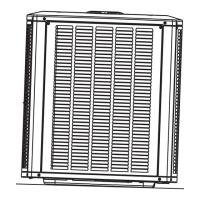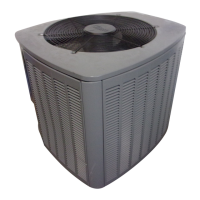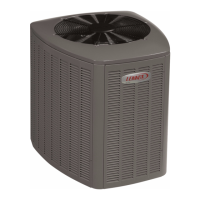MAINTENANCE OF YOUR UNiT ignite. If the burner does not ignite, contact a qualified
service technician for assistance.
There are routine maintenance steps you should take to
keep your unit operating efficiently. This maintenance will
assure longer life, lower operating costs, and fewer
service calls. In addition to the maintenance procedures
listed in this manual, there are also other service and
maintenance procedures that require the skills of a service
person who has specialized tools and training. Personal
injury can result if you are not qualified to do this work.
Please call your dealer when service is needed.
Your unit is designed to give many years of efficient,
satisfactory service. However, the varied air pollutants
commonly found in most areas can affect longevity and
safety. Chemicals contained in everyday household items
such as laundry detergents, cleaning sprays, hair sprays,
deodorizers, and other products which produce airborne
residuals may have an adverse effect upon the metals
used to construct your appliance.
The cabinet of the unit can be cleaned with soap and
water. Grease spots can be removed with a household
cleaning agent.
It is important that you conduct periodic physical inspections
of your appliance, paying special attention to the gas
burners and the flue outlet. These components are located
at the front of the unit. Aflashlight will be useful for these
inspections. Make one inspection prior to the beginning of
the heating season and another during the middle.
When inspecting the flue outlet, be sure to check for
evidence of black soot or blockage by leaves or other
debris. Clear any blockage that is found. If any soot is
found, a qualified service agency should be called should
be called immediately.
During your periodic inspections, check for obvious signs
of deterioration of the unit. Check that the return and
supply ducts attached to the unit are sound and airtight.
Check that the unit's physical support and concrete slab
or roof curb is sound and not in need of repair. Make sure
there are no gaps between the roof curb and the unit
where rain could leak in. Snow or debris should not be
allowed to accumulate in or around the unit.
As part of your inspection, you should start the unit. The
vent motor should start and purge the system for 30
seconds. After the prepurge time, the burners should
Should you observe unusual amounts of any of the following
conditions, it is important that you call your authorized dealer
at once to obtain a qualified service inspection:
Rust, flakes, or other deposits
Coatings
Corrosion
Even if no unusual rust or other conditions are observed,
it is recommended that the unit be inspected and
serviced at least once per year by a qualified service
technician. Regular inspections and planned mainte-
nance will assure many years of economical performance
from your unit.
Combustion and Ventilation Air
This unit requires air for combustion and ventilation to
ensure both proper and safe operation. Combustion air is
brought in through the condenser section. Do not block or
obstruct the condenser coil or condenser fan opening.
Venting and Unit Support
Venting of this unit must comply with the unit Installation
Instructions. Be sure the installer has followed these
requirements. If not, you should request the installer to
comply as soon as possible.
Make sure the vent terminal is clear and free of any obstruc-
tion. For proper venting terminations, see the Installation
Instructions furnished with the unit.
Check to see that the unit cabinet is sound and firmly sup-
ported, without sagging. There should be no cracks or gaps.
It is important that the outside area where the vent termi-
nates is kept clear of any obstructions which might block or
impede the venting of the unit. Screens in vent terminals
should be cleaned periodically. Should venting become
blocked at anytime, your unit is equipped with a special
safety control to prevent operation of the unit until the
#48368H005 Page5

